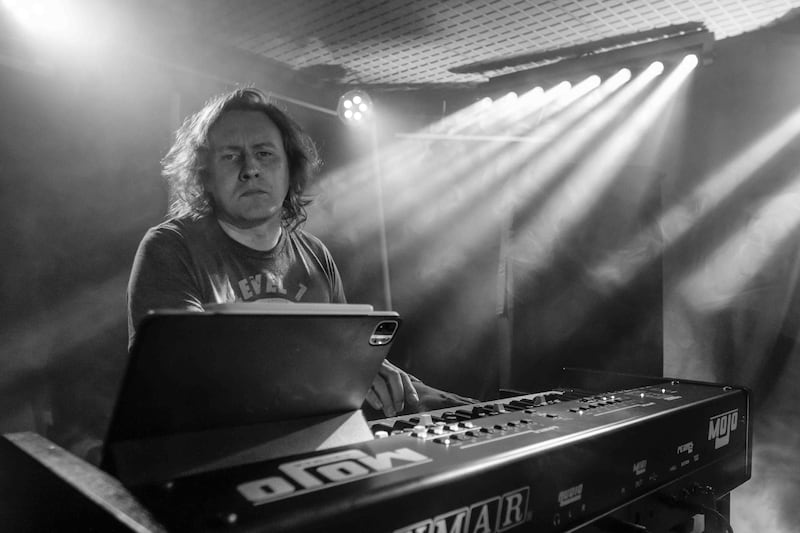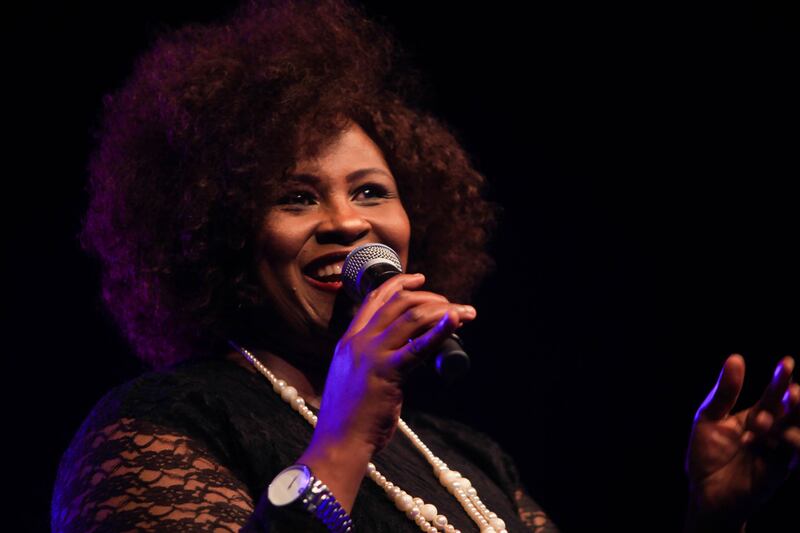GROWING up in the 1960s, I remember my céilí-dancing uncle giving off about ‘jazz music’ when he was actually talking about the pop music of the time.
But that was always – and still is – the case: no-one can quite define what jazz music is
It was certainly the case in the 1920s and 30s of the last century, when the new genre of music infiltrated Ireland via records, the wireless and returning emigrants.
Many people were appalled by the brash, unrestrained new music and feared for the morals of the nation, but the non-dogmatic part of the population saw it as a breath of fresh air in a conservative, stultifying, post-partition Ireland, north and south.
Indeed, some traditional musicians were very happy to add a little bit of jazz to traditional tunes, and it is this fusion – before ‘fusion’ was a thing – which makes up Belfast fiddler and academic researcher Conor Caldwell’s new album, Oh, Listen to the Band!, also featuring award-winning Tyrone musician and composer Ryan Molloy.

Read more:
It’s fair to say that the arrival of jazz in the island of saints and scholars was not universally welcome - although no-one was sure what this newcomer was - giving a Father Ted “Down with this sort of thing” vibe.
“I think probably the thing I took most out of the research I put into the period was that nobody had an answer,” says Conor.
“You literally have minutes of parish or town council meetings where councillors would be asking ‘what is this jazz that everybody’s talking about?’”
“But whatever it was, people were agin it. There were even smear campaigns against certain politicians, at the time, who were rumoured to be attendees at jazz dances.”

One of those most opposed to “the Devil’s music” was Fr Peter Conefrey from Co Leitrim who claimed that jazz was “borrowed from Central Africa by a gang of wealthy Bolshevists in the USA”.
At a march Fr Conefrey organised in 1934, the General Secretary of Conradh Na Gaeilge in Dublin, Seán Óg Ó Ceallaigh said that the then-Minister for Finance, Seán McEntee, “had a soul buried in jazz and that he was jazzing every night of the week”
Eamon De Barra, editor of An Camán, said that GAA clubs who held or attended jazz dances were “enemies of the country.”
On a darker note, there was racism involved in the anti-jazz movement.
“There were very, very open denouncements of the music on racial grounds,” says Conor, “with a lot of themes that are fairly familiar today with the growth of far-right politics through the generations.
“On the one hand, there’s the kind of the protection of women within society, you know, that the ‘pure Irish colleen’ couldn’t possibly defend herself from the onslaught of this kind of illogical music that was sweeping through the place.”
However, not all the clergy had Fr Conefrey’s misgivings. As Conor points out, “if they felt they could make a few quid for the parish by having a jazz dance, they might, say, organise a night of Irish céilí music in order to not have to pay the tax on ‘foreign music.’”

“But then, after the first two dances, then they would just let the band play whatever they wanted. And people will be coming from parishes all around to fill the coffers.
“That kind of process of cultural change is always driven by people and not governments,” he says.
Others however, really took to the new “foreign music” in its different forms, as Conor explains.
“‘Hot jazz’ was kind of New Orleans improvisation, and ‘sweet jazz’ was more like music hall songs with words. Sweet jazz was more the type of thing that was popular in Ireland.”

It even made its way to rural Donegal and to the legendary fiddle player, Johnny Doherty, whose music was the basis of Conor’s PhD at Queen’s, and this in turn is the basis for Oh, Listen to the Band, a fantastic collection of tunes where jazz and Irish traditional music go for a walk together.
“I am lucky to have access to a lot of archival records of John Doherty from when I did my my PhD,” admits Conor.
“For years, all I had concentrated on was the reels, jigs, hornpipes and barn dances - I hadn’t realised that there was this other music contained within the archives, because they weren’t relevant to what I was interested in.
“Slowly but surely, I started to recognise that these other pieces all belong to another genre that that was coherent, and that told a story.”
Conor has brought 11 of these pieces together on Oh, Listen to the Band!.
One surprising track is the hugely popular Yes, We Have No Bananas.
“With Yes, We Have No Bananas and the accompanying piece, Oh Johnny, Oh Johnny, Oh!, I had to kind of discern what the structure might have been and figure out how it would have been played, and which bits of the song they would have chosen to play,” Conor explains.
It’s apt, of course, that the Belfast-man would choose Yes, We Have No Bananas, as it was used during the Outdoor Relief protests when Catholics and Protestants took to the street to protest about social and working conditions in 1932 together.
It was the only song both groups knew that wasn’t overtly sectarian.
Another strange addition to the album is the French National Anthem, La Marseillaise. How come?
As Conor explains, many national anthems were originally some sort of popular folk tune which would be fitted with words later on.
“Django Reinhardt recorded it as a dance tune for jazz dancers and it was widely arranged throughout the Western music world in the early part of the 20th century.
“So, Con Cassidy and probably Frank Cassidy would have played it in the dance hall in Teelin in southwest Donegal.”
However, there is something which connects a lot of the tunes on the record, as Conor explains.
“The tunes that I researched all share the same sort of characteristic – you can play them at about 120 beats per minute. They’re earworms, and that tempo and rhythm is perfect for dancing.
“So, traditional musicians were being asked to perform music that was suitable for these dances. And younger people obviously didn’t want to hear a hornpipe, they wanted to hear something else, so trad musicians adapted to play whatever music young people wanted to dance to.
Conor is giving an illustrated talk on Trad/Jazz Fusion in 1920s Ireland as part of the Belfast Tradfest on Friday July 26 at 2pm and Oh, Listen to the Band – some of which was recorded in the Centre Culturel Irlandais in Paris – is being launched at Raidió Fáilte in Divis Street on Saturday July 27 at 2pm.
The good news is that it is also being live streamed on session.org.








